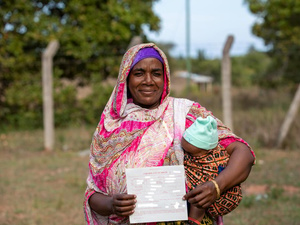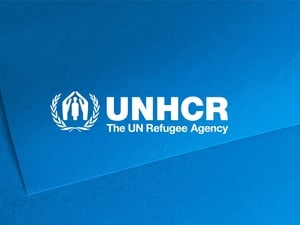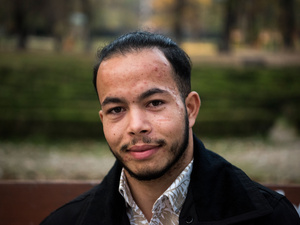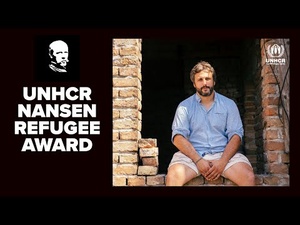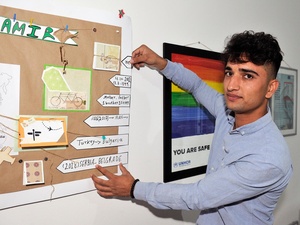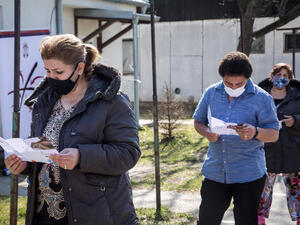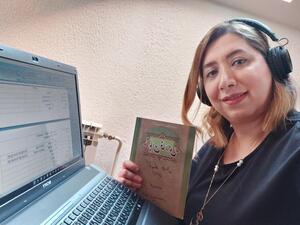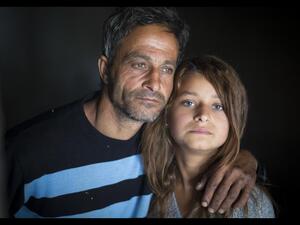Kosovo Crisis Update
Kosovo Crisis Update
Return
UNHCR has prepared a concept paper on the anticipated return to their homes in Kosovo of up to 1.5 million refugees and internally displaced people once conditions warrant this.
A document outlining a framework for return planning has been discussed with other U.N. agencies, and shared with donor countries and non-governmental organizations.
The paper says even if prospects for peace may appear remote, there is considerable diplomatic activity to find a solution and UNHCR and other concerned agencies must be ready to help in the return of people forced from their homes, when this becomes possible.
UNHCR has stressed repatriation will hinge on three essential conditions: effective security guarantees by the Yugoslav government for returnees and aid workers, withdrawal of military and paramilitary units responsible for atrocities and expulsions, and the deployment of an international military force to secure the civilian population and humanitarian operations.
Winterization
As attention is given to preparations for return, UNHCR and its partners must also be prepared to help refugees and displaced people who may still be in neighbouring countries and areas throughout the winter. UNHCR's winterization programme has gotten off the ground with the purchase of 15,000 winter-proof tents. Delivery of the tents is expected to begin in July.
UNHCR is looking at a whole range of essential projects which go beyond its traditional programmes. These include road improvement, electrical and water services, among others.
Proposals for the setting-up of an "umbrella" body to oversee these diverse programmes are being considered. Already, several organizations are moving ahead with winterization plans for Kosovars.
Albania
No one came across the Morini border into Albania Thursday. Numbers of refugees arriving have dropped precipitously in the last eight days. Only 63 refugees arrived during that period, strongly suggesting that Serbian and Yugoslav authorities have effectively halted all but a trickle of people leaving.
A total of 1,355 people left Kukes for the south Thursday. Official government figures show that since the crisis began a total of 321,040 people have transited the Kukes area en route to other regions of Albania. The rest of the refugees in Albania have entered at other border crossings.
In another development, U.N. Secretary-General Kofi Annan Thursday paid a two-hour visit to Kukes, the small mountainous town in the north of the country where the bulk of the refugees arriving in Albania have entered. He was accompanied by the President of Albania.
After meeting with U.N. and NGO personnel working in the area, the Secretary-General visited two of the tented camps in Kukes, which house around 30,000 refugees. There are an estimated 90,000 Kosovars living not only in the camps but also in collective centres and with host families in the Kukes area.
Mr. Annan visited clinics, recreational facilities, a food distribution centre and met with several refugees, including a mother with a 3-week-old baby who had been wounded during her flight from Kosovo.
At a news briefing at the close of his visit, he reiterated the determination of the U.N. and international community to ensure that all the refugees eventually return to Kosovo.
In another development, UNHCR and UNICEF signed in Tirana on Wednesday an agreement to establish "child friendly spaces" in camps and communities hosting refugees in Albania. Help from the government and other UN agencies will be solicited in implementing the programme which would look for areas where basic services, including recreational facilities and hygiene programmes, could be made available to children and women.
FYR of Macedonia
More than 2,700 refugees arrived in the FYR of Macedonia on Thursday in the largest one-day influx since arrivals stopped on 5 May. All except 400 who entered through Jazince and Tabanovce came on a train from Pristina.
The train consisting of eight to 10 carriages reached the Blace border around noon and 25 buses took the refugees to Cegrane and Stenkovec camps. UNHCR has been expanding camp facilities following reports that thousands of Kosovars may head toward the FYR of Macedonia after hearing news broadcasts that the border is open.
The refugees who arrived yesterday mainly came from the Pristina-Urosevac area where they had gathered after leaving surrounding villages. A group from Kamena Glava in Urosevac said the town of about 5,000 people was hit by artillery fire on 6 April. The people then fled to the hills, but when they returned later they found that 90 percent of the houses had been destroyed in the shelling. They had been wandering since.
The refugees say very few Albanians are left in Urosevac, previously a vibrant commercial town that was home to around 50,000 Albanians and 5,000 Serbs. IDPs drift to the town from the surrounding villages to get on the train to the border, the arrivals say.
Arrivals recounted stories similar to those told by people who had fled earlier - of Serbian army and paramilitary mounting a campaign of terror and ethnic cleansing that included beating of civilians, stripping civilians of their money and valuables and burning houses.
One refugee said he was one of the 1,000 passengers on the train that was sent back on Monday 17 May after it reached the border. He succeeded in getting off Thursday on his second try to reach the FYR of Macedonia.
Meanwhile, in an ongoing effort to prepare for contingencies, the government has offered two new camp sites. One site, close to Cegrane camp, will have a capacity of 8,000 and can be extended to 11,000. The other is located east of Tetovo and will be able to hold 4,000 to 5,000 people.
Republic of Montenegro
Arrivals in Montenegro slowed to a trickle with only 10 Kosovars entering on Thursday. Several hundred had been arriving daily in the past days, but tension has heightened after the Yugoslav army tightened control over the borders of Montenegro a week ago.
Also on Thursday, UNHCR transported 90 displaced people from Rozaje to Ulcinj in a continuing effort to move Kosovars there because of increased military activity.
UNHCR-IOM Humanitarian Evacuation Programme
In the first flight leaving via Greece under the humanitarian evacuation programme, 374 refugees flew Thursday to Australia from Thessaloniki, as part of a plan to expand departure capacity, in view of the congestion of Skopje airport.
The refugees, mainly women, children and elderly, were transported in nine buses from camps in the FYR of Macedonia earlier Thursday. They took off for Australia later in the day.
A total of 2,110 refugees left for third countries under the programme on Thursday, bringing the overall departures to date to 56,592.
In addition to the Australia-bound passengers, the others who departed Thursday from the FYR of Macedonia proceeded to Austria, Canada, Germany, Ireland, Italy, the Netherlands, Norway, Portugal and Switzerland.
At least 39 countries have offered 135,000 places for the evacuation from the FYR of Macedonia, with priority accorded to the most vulnerable refugees, including those in need of special medical care and family reunification cases.


